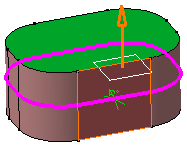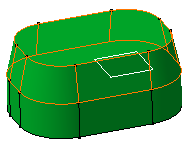-
Select the face to be drafted.
-
Click Draft Angle
 .
.
The Draft Definition dialog box displays and an arrow appears on the part, indicating the default pulling direction. The selected face is red and highlighted. The application detects that other faces are to be drafted and displays them in light red.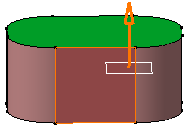
-
Enter 13 degrees as the new angle value.
For more information, see Angle Values. -
Now click More to display the whole dialog box and access the Parting Element capability.
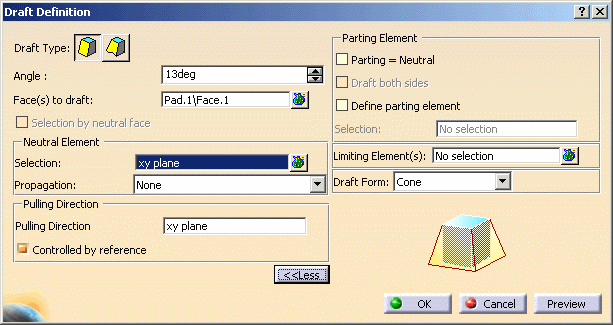
Parting Element
-
To define the parting element, you can check:
- Parting = Neutral to reuse the plane you selected as the neutral element,
or
- Define parting element and then explicitly select a plane or a planar face as the parting element.
When using a parting element and a limiting element, both selected elements must intersect to produce a draft feature.
-
Select Parting =Neutral. You then can also select Draft both sides as illustrated at the end of the scenario.
To get information about the Draft form option, see Angle Values.
-
Contextual commands creating the parting elements you need are available from the Selection field:
-
Create Plane: see Creating Planes
-
XY Plane: the XY plane of the current coordinate system origin (0,0,0) becomes the parting element.
-
YZ Plane: the YZ plane of the current coordinate system origin (0,0,0) becomes the parting element.
-
ZX Plane: the ZX plane of the current coordinate system origin (0,0,0) becomes the parting element.
-
Create Join: joins surfaces or curves. See Joining Surfaces or Curves.
-
Create Extrapol: extrapolates surface boundaries or curves. See Extrapolating Surfaces and Extrapolating Curves.
If you create any of these elements, the application then displays the corresponding icon next to the Selection field. Clicking this icon enables you to edit the element.
-
-
In the specification tree, double-click the draft to edit it.
-
Select Draft both sides to draft the pad in both opposite directions from the parting element.
-
Click OK to confirm.
The pad now looks like this: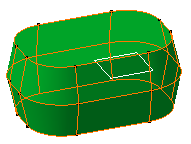
Angle Values
- You can draft faces using a negative value.
-
If the chosen angle value exceeds the angle value of the faces adjacent to the face to be drafted, an error message is issued. To perform the draft, you then need to activate the Square option available from the Draft form drop-down list. The use of the Square option does not guarantee that parts will be easily removed from their molds.
Here is an example of a drafted face obtained using the Square option:
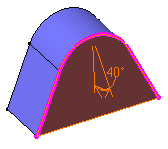

Methodology
If you perform a difficult drafting, for example if you obtain twisted faces, use the Deactivate and Extract Geometry commands to solve your difficulties. For more information, see Extracting Geometry.
